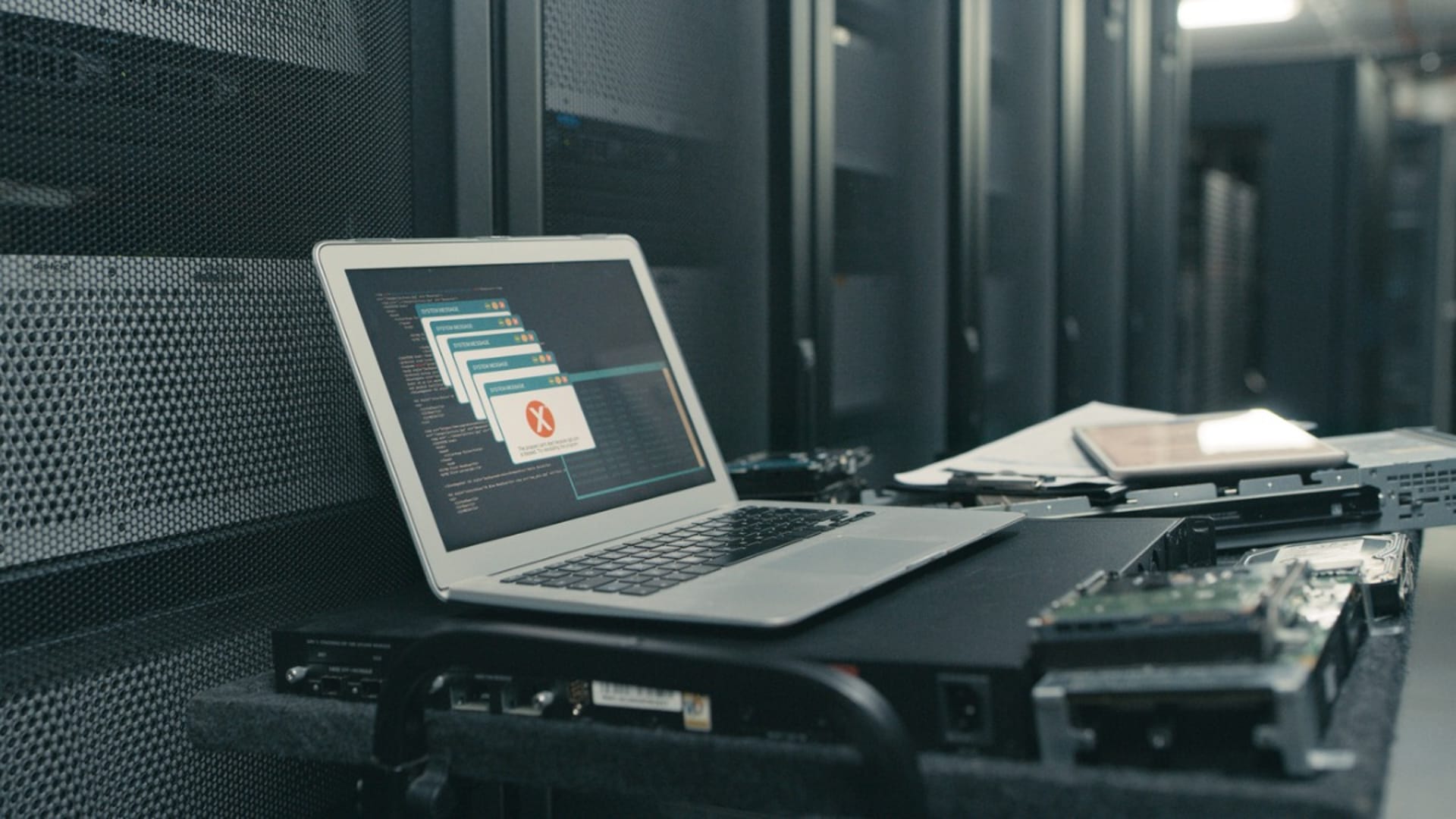Cybersecurity Development Company
Access the top 1% of LATAM tech talent within 2 weeks. Bolster security across your systems and programs.
500+ companies rely on our top 1% tech talent.
Cybersecurity Development Services We Provide
Cybersecurity Risk Assessment
Pinpoint potential vulnerabilities in your digital defenses with a cybersecurity risk assessment. Evaluate threats, identify weaknesses, and outline preventative measures to keep your business safe.
Using Qualys, Nessus, and OpenVAS, we conduct end-to-end cybersecurity assessments. We facilitate exhaustive risk detection to prepare your company for many different possibilities. With actionable insights into your current security defenses, you can mitigate threats and eliminate weaknesses within your networks, systems, and applications.
Intrusion Detection and Response
Monitor your systems for malicious activities and outline plans to respond to threats before they arise. Intrusion detection and response planning will help mitigate security incidents and protect your company data.
We assess network traffic, search for anomalies, and create systems to monitor potential threats. Leveraging tools like Wireshark, Snort, and Suricata, we minimize the impact of intrusions, detect malicious intent, and protect your business from cybersecurity incidents.
Endpoint Detection and Response
Enhance your company’s security posture across all endpoints to keep your organization safe. Access real-time endpoint monitoring to analyze user behavior and rapidly respond to threats as they arise.
We provide comprehensive endpoint monitoring. Once we detect a threat, we leverage AI-driven threat response tools like Carbon Black to identify, assess, and neutralize it.
IT Governance, Risk, and Compliance
Align with important compliance initiatives to decrease risk and adhere to governmental and industry regulations. Streamline compliance across all of your deployments and develop a clear strategy for future regulatory changes.
We customize and leverage tools like RSA Archer and Service Now GRC to optimize business compliance and minimize risk.
Vulnerability Scanning
Scan every connected application, network, and system to your business to identify weaknesses and build a stronger cybersecurity ecosystem.
We use OpenVAS and Nessus to scan corporate networks to find potential vulnerabilities. This helps mitigate cyber risks while providing the foundation for an advanced intrusion detection system.
Penetration Testing
Penetration testing involves simulating real-world cyberattacks, allowing your business to better prepare its systems and mitigate future risks. Neutralize cyber threats and protect against data breaches with regular ethical hacking endeavors.
Our penetration testing cybersecurity experts use threat intelligence to launch pre-planned cyber attacks on your existing security solutions. With tools like NMap, Wireshark, and Metasploit, we develop, test, and simulate cyberattacks to pinpoint vulnerabilities and craft solutions.
Forcepoint case study
Forcepoint partnered with BairesDev to gain access to a team of skilled engineers. Their collaboration resulted in enhanced cybersecurity products, delivering an unparalleled web experience. Forcepoint Case Study.

Key Things to Know About Cybersecurity
Best Practices for Cybersecurity
Mandate the use of strong, complex passwords and encourage frequent updates to enhance account security.
Create tailored training programs to educate employees about cybersecurity best practices and emerging threats.
Regularly simulate phishing attacks and provide training to increase awareness about social engineering tactics.
Follow international and industry-specific cybersecurity standards to ensure compliance and robust security protocols.
Use automation to ensure timely updates of software and operating systems for security.
Enhance security by requiring additional verification steps during authentication processes.
Use these tools to monitor and protect networks from unauthorized access and attacks.
Protect data integrity and confidentiality by encrypting data both in transit and at rest.
Utilize SIEM tools for real-time analysis and monitoring of security alerts generated by network hardware and applications.
Implement advanced solutions for endpoint security to detect, investigate, and respond to cyber threats.
Ensure secure data storage and sharing in the cloud with robust access control mechanisms.
Regularly backup data using encrypted formats to prevent data loss and unauthorized access.
Control access to sensitive information based on user roles and the principle of least privilege.
Provide secure VPN access to ensure safe and encrypted connections for remote workers.
Utilize the latest wireless security protocols and segment networks to enhance security.
Regularly conduct tests to identify and address system vulnerabilities.
Prepare and maintain an effective plan for responding to cybersecurity incidents.
Ensure all endpoints and servers are secured with the latest configurations and updates.
Embed security practices into all stages of software development for proactive risk management.
Continuously assess and improve security performance using relevant metrics and feedback loops.
Why Choose BairesDev for Cybersecurity Development

Robust Security Measures
Your company data is your most important resource. That’s why we employ robust security measures to provide end-to-end monitoring, testing, disaster planning, and threat prevention for your business.
Diverse Range of Talent
We hire leading cybersecurity experts from around the globe to offer you industry-leading support in many areas of cybersecurity development. From security analysts to security experts, our diverse professionals provide the expertise to construct a refined security posture.
Bespoke Solutions
We craft customized cybersecurity solutions to keep your business safe. We balance cybersecurity monitoring, IT security services, and more to provide end-to-end protection.
Our process. Simple, seamless, streamlined.
During our first discussion, we'll delve into your business goals, budget, and timeline. This stage helps us gauge whether you’ll need a dedicated software development team or one of our other engagement models (staff augmentation or end-to-end software outsourcing).
We’ll formulate a detailed strategy that outlines our approach to backend development, aligned with your specific needs and chosen engagement model. Get a team of top 1% specialists working for you.
With the strategy in place and the team assembled, we'll commence work. As we navigate through the development phase, we commit to regularly updating you on the progress, keeping a close eye on vital metrics to ensure transparency and alignment with your goals.
FAQs
What should I look for when choosing a cybersecurity services company for my business?
Look for a company with a strong track record, relevant certifications, comprehensive service offerings, positive client reviews, and an approach that aligns with your specific business needs and industry standards.
What are the most common types of cyber threats?
The most common cyber threats include phishing attacks, malware (like viruses and ransomware), denial of service (DoS) attacks, man-in-the-middle attacks, and data breaches.
How can a company effectively assess and improve its security posture?
A company can assess and improve its security posture by conducting regular security audits and risk assessments, implementing robust cyber security policies and practices, training employees on security awareness, and staying updated with the latest security technologies and trends.
How should a company prepare and respond to a data breach incident?
When preparing for and responding to a data breach, a company should engage information security services to develop an incident response plan, emphasizing quick containment, investigation, and notification. Regular employee training and post-incident analysis with these services are crucial for effective response and prevention of future breaches.
How Businesses Can Overcome the Software Development Shortage
BairesDev Ranked as one of the Fastest-Growing Companies in the US by Inc. 5000

See how we can help.Schedule a Call









